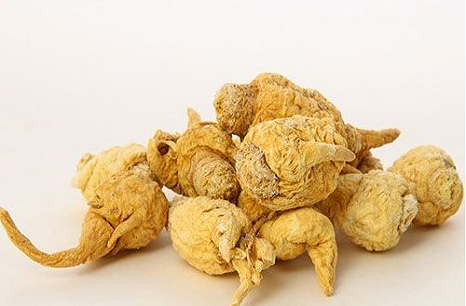Nourishing, Nutty Maca
It looks like the love child of a potato and white radish. It grows wild in the frigid ground of the Andes mountains thousands of feet above sea level in Peru. And it has a nutty, slightly butterscotch-y taste. Maca root, which comes from the mustard plant family, is a nutritional powerhouse. But just how super is this superfood?
Veggie With Many Names
Maca root goes by many names, including maca-maca, maino, ayak chichira and ayak willku. It’s also called Peruvian ginseng, which can be misleading because maca is a vegetable and ginseng is an herb. Both have a reputation for giving big boosts of energy. But more research is needed to back this up.
Ancient Staple
People in the Andes have grown maca for thousands of years. They use the root as a food supplement as well as a traditional medicine for everything from fertility problems to fragile bones and poor memory. In recent years, maca has been popping up more often on health food store shelves.
Energy Potion
Maca is claimed to be an adaptogenic plant, which means it gives your body the ability to adapt to or resist what’s going on in and around it, like anxiety, stress, and depression. Researchers don’t know exactly how maca works on the body. Some scientific evidence suggests that it can give you a shot of energy.
Maca in the Bedroom
Maca has a reputation as an aid for sex and reproductive issues. Some people believe it can rev up sex drive in men and women, boost sperm count, improve erections, and ease menopausal symptoms. The fact is that those claims are backed by little or no scientific evidence.
Maca for Women
A small number of studies have suggested that maca may help ease hot flashes and other postmenopausal symptoms in women. But the evidence isn’t robust. Some studies also found that women and men who took maca extracts showed a significant uptick in their self-reported levels of sexual desire. Other studies did not find this effect.
The Good News
What’s undisputed is maca’s nutritional benefits. It packs high levels of iron and iodine to promote healthy cells and to help keep your metabolism on track. Its big doses of potassium help digestion and make muscles happy. Maca is also rich in calcium, amino acids, vitamins, and minerals.
Powder or Pill
Peruvians dry maca naturally and then boil it and drink the juice. As a supplement, maca is sold as a powder you can add to foods or drinks. It also comes as gelcaps.
How Much Maca?
We don’t have enough research to know how much is safe and how much you need to benefit from it. Maca supplements can vary widely in quality and their active ingredients. Bottom line is that there is no standard dose.
How Much Maca?
We don’t have enough research to know how much is safe and how much you need to benefit from it. Maca supplements can vary widely in quality and their active ingredients. Bottom line is that there is no standard dose.
From Peru to You
You can buy maca in powder or capsule form at health food stores, specialty grocery stores, and through various vendors online.
How to Take It
To get the most out of your maca, don’t bake with it or add it to hot foods or drinks — it loses its nutritional punch. Work it into raw foods instead, like no-bake energy treats or smoothies, or put it on top of cooked foods, like oatmeal.
Caution
If you’re on blood thinners, maca may not be right for you. It has so much vitamin K — which helps your blood form clots — that it may counteract your medication. Ditto that for men with elevated blood PSA (prostate specific antigens), who should stay away from maca. The plant’s extracts might act like estrogen, so avoid it if you have hormone-sensitive conditions like breast, uterine, and ovarian cancers or endometriosis.
Post time: Aug-26-2022
